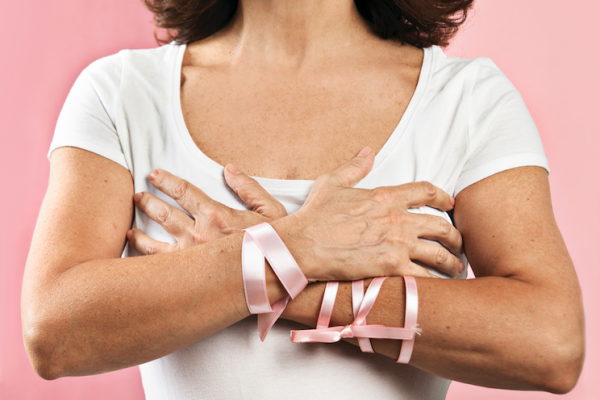Breast cancer is a disease of aging. It occurs in approximately one out of every 15 women older than 70, one out of 30 women in their 60s, one out of 40 women in their 50s, and one out of 50 women who are younger than 50. It is relatively uncommon for younger women — those who have not yet started menopause — to be diagnosed with breast cancer, says Ellis Levine, MD, Chief of Breast Medicine at Roswell Park Comprehensive Cancer Center.
However, a family history of breast and/or ovarian cancer may signal that a woman is at risk to develop breast cancer at an earlier age. “Many gene mutations have been linked to hereditary breast cancer, some much more strongly than others, but BRCA1 and BRCA2 are the ones that were first identified,” he explains. “If you have these hereditary mutations, the chances of getting breast cancer at an earlier age is greater. But it’s not necessary to have a hereditary mutation in order to be diagnosed with breast cancer at a younger age.”
If a young woman with breast cancer doesn’t have a family history of breast or ovarian cancer, she likely will be still eligible for genetic testing, because she may be the “index case,” or the first person in her family to have a mutation that increases the risk of cancer for future generations, Dr. Levine adds. However, without a family history of breast cancer, insurance may not pay for genetic testing to determine a woman’s risk of developing the disease, he says. “Most people don’t have the money to pay out-of-pocket for a test that could cost $4,000 to $5,000, and you usually have to have sufficient criteria in terms of family history to get permission from an insurance company to be tested and be reimbursed for it.”
Self-Awareness Is Key
Unfortunately, there are no symptoms to look for that might indicate early-stage breast cancer. There’s usually no tenderness or skin discoloration or any change in appearance that might wave a red flag. If a woman does begin to feel unusual pain in her breast, other than tenderness during her menstrual cycle, it could indicate that there’s cancer that has advanced to the point of infiltrating nerves, but that’s quite uncommon, according to Dr. Levine.
So how will you know if something’s wrong?
Women used to be advised to perform regular breast self-exams, but you would have to be very familiar with how your breasts usually feel in order to be aware of an irregularity. Younger women who menstruate regularly can feel differences in their breast tissue during different times in their menstrual cycle, because not all breast tissue is the same. For those reasons, conducting self-exams can cause a lot of stress and anxiety, so doctors have backed off on urging most women to conduct self-exams every month.
“On the other hand, it’s a harmless task. You can’t tell women not to do self-exams,” Dr. Levine says. “There are a lot of calls to the clinic when a woman identifies something that seems suspicious, but most of the time, an experienced examiner will tell you that there’s nothing to worry about.”
It’s also more difficult to diagnose breast cancer in young women, not only because of the changes that can happen during a menstrual cycle, but because younger breast tissue is more dense. That density provides an opportunity for a malignancy to “hide” in the tissue, making it harder to identify on a mammogram or ultrasound.
Talk to Your Doctor
The course of treatment is not much different for younger women with breast cancer than it is for women who are diagnosed later, after menopause.
If you feel a lump, you should call your family doctor or general practitioner for an appointment. Most concerns can be cleared up in this visit, but if the doctor feels an abnormality, a mammogram or ultrasound will be ordered. After that, if something unusual was detected, the matter will be “moved up the chain to get biopsies and a referral to a breast surgeon and/or a medical oncologist if it proves to be a cancer that needs to be treated.”
The key difference between breast cancer in younger women and older women is the subtype of cancer. Younger women tend to have cancers that are more often classified as “triple negative,” which means they don’t have any of the three proteins used to categorize breast cancer: estrogen receptors (ERs), progesterone receptors (PRs) and human epidermal growth factor receptor 2 (HER2). Older women are more likely to have ER-positive cancer, which often can be treated with hormone therapy after surgery (with or without radiation treatments).
“The younger you are, the more likely you are to get chemotherapy, because it’s more likely you won’t have ER-positive disease,” Dr. Levine says. “On the other hand, if I had a 65-year-old woman with ER-positive cancer and a 39-year-old woman with ER-positive cancer, we would approach them pretty much the same way.”




